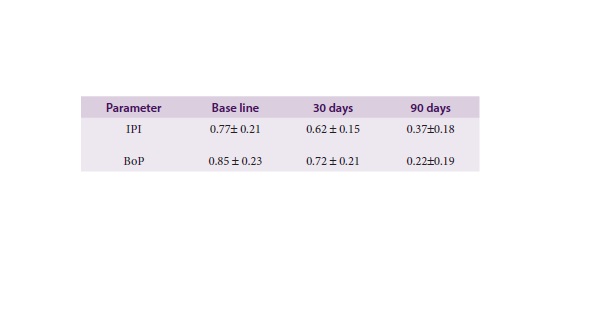The Effectiveness of Orally Administered Probiotic on Peri-Implant Tissue Condition: A Prospective Study
DOI:
https://doi.org/10.5530/bems.4.1.5Keywords:
Hyperbiotics, Peri-Implantitis, Biofilm, ImplantsAbstract
Purpose: This study investigated the effects of a probiotic lozenges in peri-implantitis patients. Method: 40 patients with mild to moderate peri-implantitis were involved in this study. Following a baseline clinical examination, a probiotic supplementation along with routine oral hygiene was recommended. The clinical examination was repeated at 30 and 90 days after beginning of probiotics supplementation. The clinical examination included probing pocket depth (PPD), bleeding on probing (BOP), the implant plaque index (IPI), implant stability (IS) and radiographic assessment. Results: Significant difference was observed in bleeding on probing (BOP), the implant plaque index (IPI) while probing pocket depth (PPD), implant stability (IS) and radiographic assessment didn’t show any statistical difference from baseline. Conclusion: This study suggests that probiotic supplementation prevents inflammation (bleeding on probing) by potentially interfering with microbial biofilm formation and affecting host responses in peri-implantitis patients.










